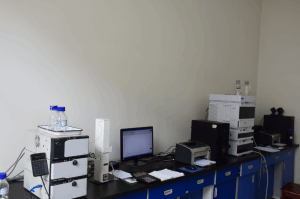
Glycyl-L-tyrosine is a white crystalline solid, and the compound amino acid dipeptide injection used in clinical practice is an parenteral nutrition formulation that provides amino acids through parenteral nutrition. In the refining process of glycyl-l-tyrosine, the removal of impurities is a critical step. The following are some effective impurity removal strategies:
1. Optimizing the Synthesis Process
By improving the synthesis process, the generation of impurities can be reduced from the source. For example, in the acylation and ammonolysis reactions, using optimized solvent systems and catalysts can improve the reaction's conversion rate and selectivity, thus reducing the formation of by-products. Specifically, glycyl-L-tyrosine can be synthesized through acylation of tyrosine with chloroacetyl chloride, followed by ammonolysis. In the ammonolysis reaction, an ammonia solution/DMF system can replace the ammonia system, and ammonium carbonate can be used as a substitute for ammonium bicarbonate as the catalyst.
2. Recrystallization
Recrystallization is one of the effective methods for removing impurities from glycyl-L-tyrosine. By choosing appropriate solvents and crystallization conditions, glycyl-l-tyrosine can be crystallized with higher purity. Multiple recrystallization steps can be performed to further improve purity. It should be noted that factors such as the number of recrystallization steps, solvent selection, and crystallization temperature will affect the final product's purity and yield. Studies have shown that using a mixed solvent of water/ethanol/ethyl acetate for recrystallization can significantly improve the purity of glycyl-L-tyrosine.
3. Adding Specific Bases for Refining
During the refining process of glycyl-L-tyrosine, adding a specific amount of triethylamine or N,N-diisopropylethylamine can greatly enhance the removal of impurities. These bases can react with impurities to form compounds that are easier to separate and can thus be removed in subsequent steps. At the same time, the amount of base added needs to be strictly controlled to avoid introducing new impurities or affecting the yield of the product.
4. Using Other Purification Techniques
In addition to the above methods, other purification techniques can be used to further remove impurities from glycyl-L-tyrosine. For example, resin columns can be used for purification, relying on the difference in the adsorption and elution capabilities of the resin for glycyl-l-tyrosine and the impurities. Advanced technologies such as membrane separation and extraction may also be considered for purification.
5. Strict Control of Production Environment
During the production process of glycyl-l-tyrosine, controlling the production environment is also an important factor affecting the impurity content. The cleanliness, temperature, and humidity of the production environment must meet specified requirements to reduce external contamination. Furthermore, quality control and monitoring during the production process should be strengthened to promptly identify and address any steps that may introduce impurities.
The impurity removal strategies in the refining process of glycyl-l-tyrosine include optimizing the synthesis process, recrystallization, adding specific bases for refining, using other purification techniques, and strictly controlling the production environment. The implementation of these strategies can significantly improve the purity and quality of glycyl-l-tyrosine, meeting its application requirements in the pharmaceutical field.